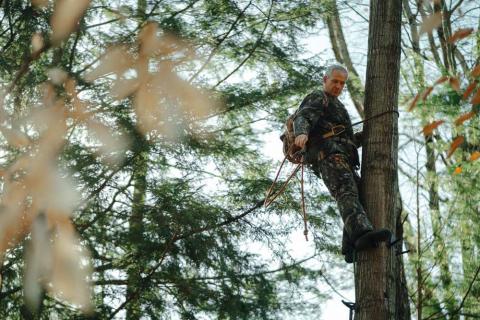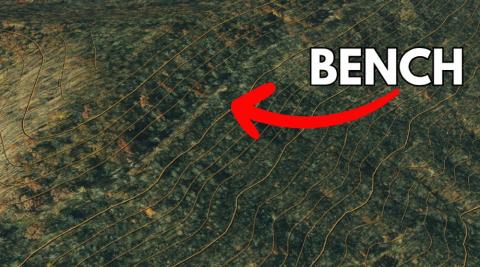Chris Bridges
Forest management for wildlife habitat improvement provides many opportunities to appreciate species that might be overlooked if we were concerned solely with maximizing the value of timber production. While I know that many sites can be effectively managed for timber production, wildlife habitat and many other uses, we all run into sites occasionally that are problematic due to past soil erosion, topsoil depth, shallow clay layers or a variety of other factors. Therefore, it is important that we recognize trees that are uniquely adapted to simultaneously surviving on shallow soils while also providing mast and cover for wildlife. Post oak has several unique characteristics that make it an important species for acorn production, especially on shallow soils that are unfavorable for other oaks.
POST OAK BIOLOGY AND ACORN PRODUCTION

Many of us have walked through hardwood stands with considerable post oak components without paying much attention to the trees or all that they are contributing to the site. As I was learning dendrology many years ago, I tried to focus on the shape of the leaves, which has been described as similar to a maltese cross or a lowercase ‘t.’ The waxy coating and tiny hairs on the leaves suggest the resilience of this species to difficult sites. While often it does not grow as tall as white oak or red oaks on sites of moderate quality, on poor soils it may be the dominant species often growing to forty to fifty feet tall at maturity and often being one to two feet in diameter. Most importantly, it is a member of the same subgenus as white oak, so it shares many characteristics. Post oak acorns mature in one year and typically drop before red oak acorns drop. This is an important consideration for stand placement as the mast from post oaks is likely to be available earlier in the fall than acorns from members of the red oak group such as black oak, willow oak, etc.
Although it is a slow growing tree, post oak wood is relatively resistant to decay when compared to other oaks. The bark provides it with a degree of fire tolerance, which explains the prominent role of post oak along the margin of woodlands or interspersed in prairie and savanna ecosystems. This open-grown environment often leads to a wide branching pattern that is aesthetically appealing but results in poor timber quality. Still, post oak acorns are eaten by deer, squirrels, raccoons and many other species.
Perhaps the most endearing quality of post oak is its adaptation to shallow soils that are located above a clay layer. Subsoil clay in the Southeast can cause problems for a range of tree species, both by draining too slowly following heavy spring storms and by drying out during summer droughts. Additionally, some tree species have difficulty with root development in heavy clay soils. Post oak is primarily an upland oak species and often occupies south or west facing slopes. Based upon these unique characteristics, post oak fills a unique niche in that it is tolerant of drought, clay soils and survives on sites that other species often cannot.
IMPLICATIONS FOR HABITAT MANAGEMENT

In the South, most of us have run across sites that carry the scars of past management strategies. It is typical for many land managers and biologists to be charged with developing effective habitat improvement plans on sites that are highly depleted of topsoil, highly acidic, low fertility and limited capacity to supply water to tree seedlings. Oak savanna and woodland restoration can play a major role in reducing erosion through soil stabilization but success is dependent upon selection of species that are well-adapted to the site. Many good projects have failed because the moist conditions of the planting season did not persist through August and September. Given both the extreme droughts and flooding that our region has experienced in the past several years, it is worth the time to select well-adapted tree species that provide the best possible chance for survival and long-term productivity.
Additionally, it is sometimes possible to select tree species that stand a good chance of survival but might not necessarily provide high value for wildlife habitat. Therefore selection of native trees grown by a reputable nursery is an important consideration for any wildlife habitat improvement project but especially one undertaken on dry ridges, hillslopes, eroded or shallow soils. Post oak represents an important component of hardwood forest ecosystems that fills a gap that few other species are able to. Whether grown as a large component of upland oaks and hickories, or grown at a lower density in combination with native warm season grasses in an oak savannah, post oaks can represent a lasting contribution to a range of wildlife habitat improvement projects.































